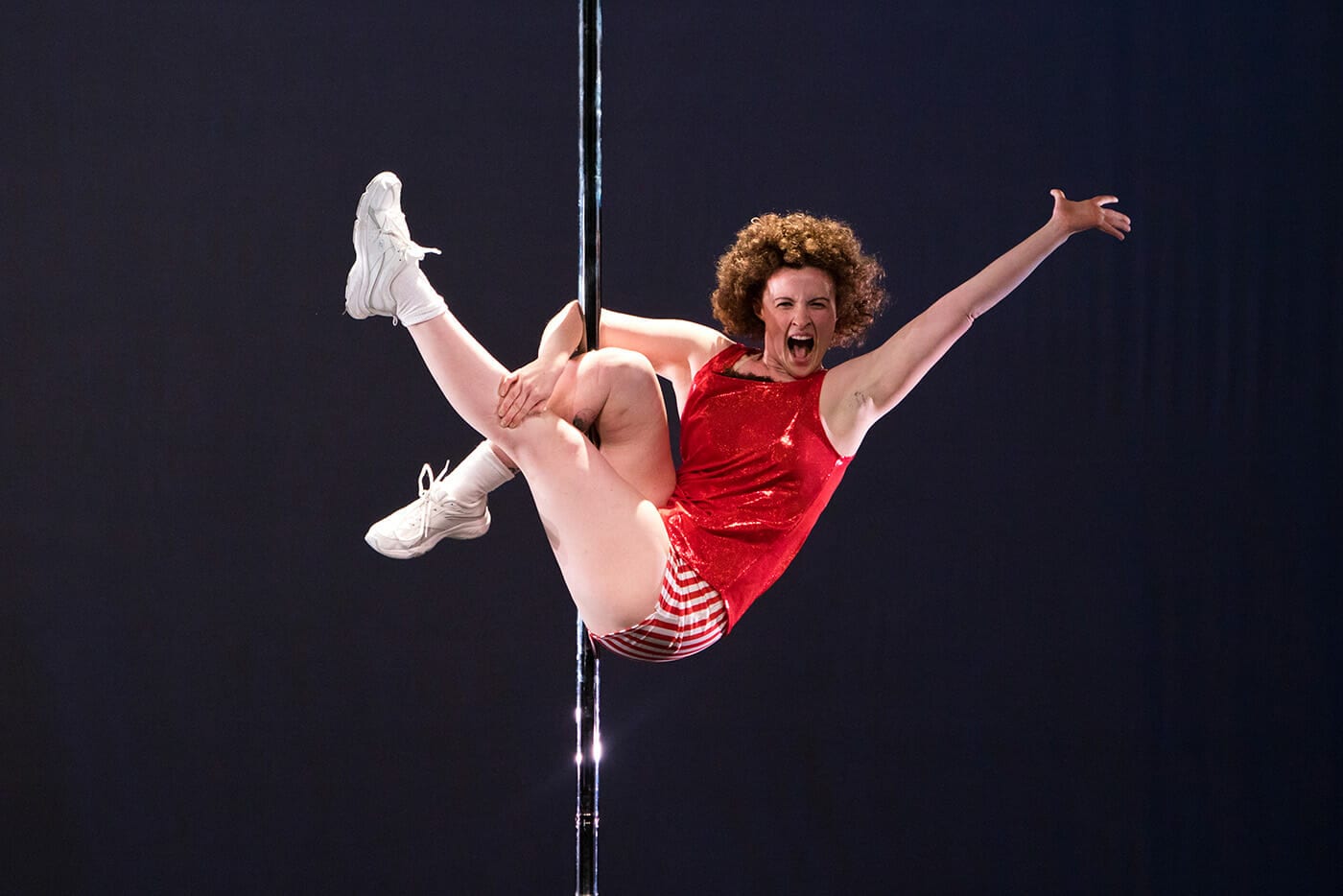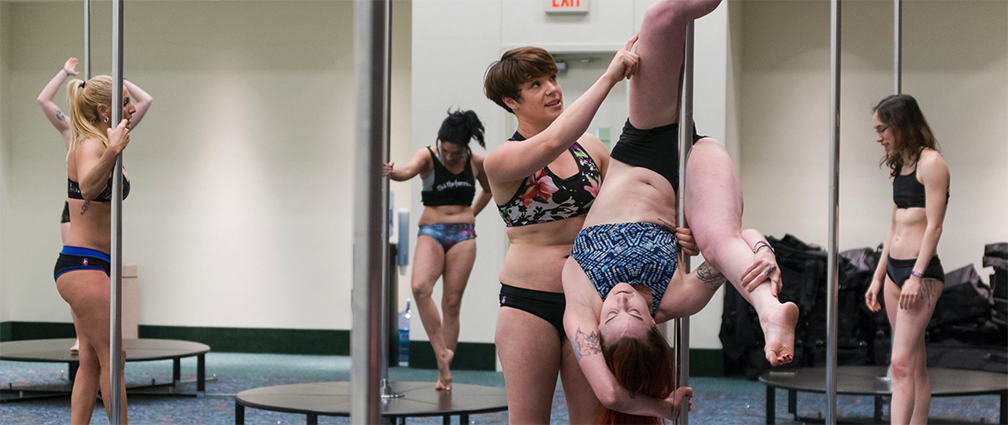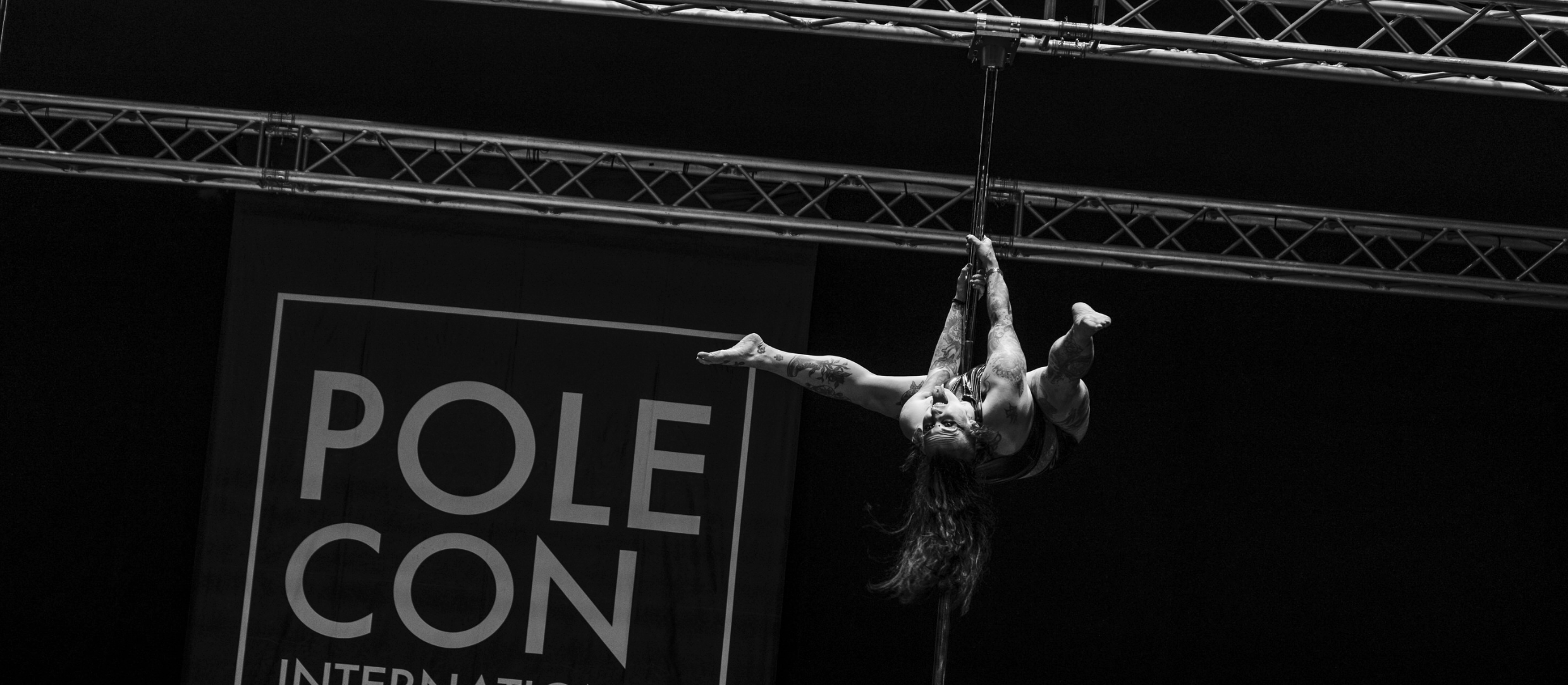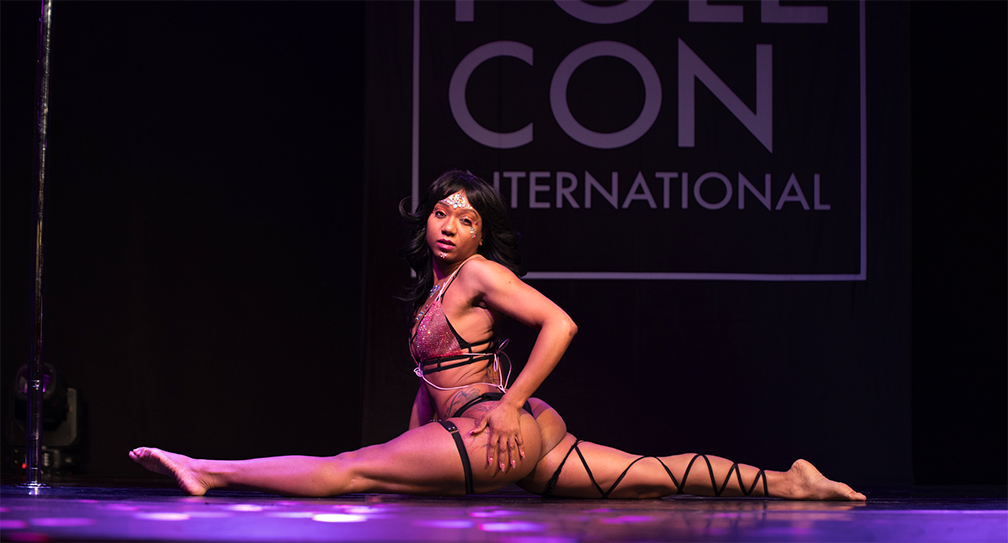I asked this a few weeks ago via social media and many people had some…

The Road to Richard: A sneak peak into my collaborative process of creating award-winning routines!
Creating routines can be challenging and intimidating. Where do you start? How do you start? Whether you have a million ideas or not even a single clue, the important thing to remember is that it’s not something you have to suffer through alone. My name is Amy and I perform under the stage name “The Pole Comedian”. My routines are always fun, energetic, and (naturally) comedic. My most recent endeavor was the Northeast Aerial Art Championship on October 24. There, I performed a routine inspired by eighties workout icon Richard Simmons and won my division. As always, it was a long road to get to the completed product. Here is my step-by-step approach to coming up with cohesive competition-worthy routines!
Step 1: The Idea
I like to put myself into the shoes of the audience. Often times at competitions, you see very similar routines over and over and over again. That’s not to say they aren’t good but in a competition setting you are trying to stand out.
To start, write down a list of ideas or, if you’re stumped, listen to some of your favorite music. See what speaks to you as an artist. Then, once you feel like you’ve found something you like, try to come up with a concept that matches that music. Alternatively, you can also think of a concept and then find the right music. I usually do the latter of the two but every now and then a song will come on and I have to dance to it.
Once you think you’ve come up with a good idea…GO TO GOOGLE! You want to see if anyone else has done that concept before and, if so, investigate what they did with it. Ask yourself questions like, “will I be able to bring something new to this concept or will my act be redundant?” The key here is that you want to try to do something that hasn’t already been done. This is both for the purposes of keeping your routine fresh and also protecting yourself from being compared directly to another dancer.
Step 2: Let the collaboration BEGIN!
Now that you have a concept, the fun begins! Play your music. Freestyle. Talk about your idea with some trusted friends or instructors. Bounce ideas off of them regarding how to make your message clear. At this moment in the process, you have a clean slate and anything is possible. My Richard Simmons routine started out with my sister and I chatting on the floor of the living room at my parent’s house. We kept thinking, “what would Richard do?”
Here is a video of my very initial choreography: https://youtu.be/V3xB_yPyC_U
As you can see, it was far from perfect but that’s the wonderful part; it shouldn’t be perfect when you first start! Creating a routine is much like writing an essay. You start with a first draft and you edit it over and over until you finally reach the holy grail of end products! That brings us to…
Step 3: Editing
Ok! You’ve got your initial choreography down but you feel like it’s not quite there yet. That’s perfectly normal! It might seem crazy but show it to your instructors. Often times we are so close to a project that we fail to see the opportunities for improvement. Showing a trusted set of fresh eyes is never a bad thing. For me, I mainly went to my instructor, Brittany, who helped me immensely through the process. I also had a handful of other instructor and peers who I showed the routine to because each one brought a new perspective as to what I needed to work on. Just remember, the more people you ask, the more opinions you will get. You don’t have to agree with all of them, but at least consider what is being said. If you show your piece to the right people, they will have some highly valuable things to say that will help make your routine shine. My grandmother always told me growing up that “every good writer needs a good editor”. I don’t see how creating a dance routine would be any different!
Step 4: Practice Makes Perfect
Once you have your routine, all that’s really left is to practice, practice, and practice some more. Your final product should look effortless. The only way to do that is to practice to the point that you no longer need to think about what you’re doing. This will also allow you to relax and enjoy being on stage (as you should! It’s your moment!).
Here is the video of my final competition performance: https://youtu.be/kMFR1itSKOs
While I can’t promise you a gold medal, what I can say is that two heads are better than one. Think of this process as though you are making a salad with friends. You provide the lettuce, someone brings over the carrots, someone else throws in the cucumbers and, eventually, you’ve got yourself a hearty, epic salad! Sometimes we get so caught up in what we’re trying to do that we forget about what the audience is seeing. Having someone else look at what you’re doing is invaluable and helps you to see through the eyes of someone new.
Latest posts by Amy Rosvally (see all)
- Are you a new poler? - March 29, 2019
- See No Evil, Say No Evil, Hear No Evil: The 3 Step Guide on How to Deal with Internet Trolls - March 31, 2017
- I’m NOT a Sexy Pole Dancer…Or Am I? - August 19, 2016


